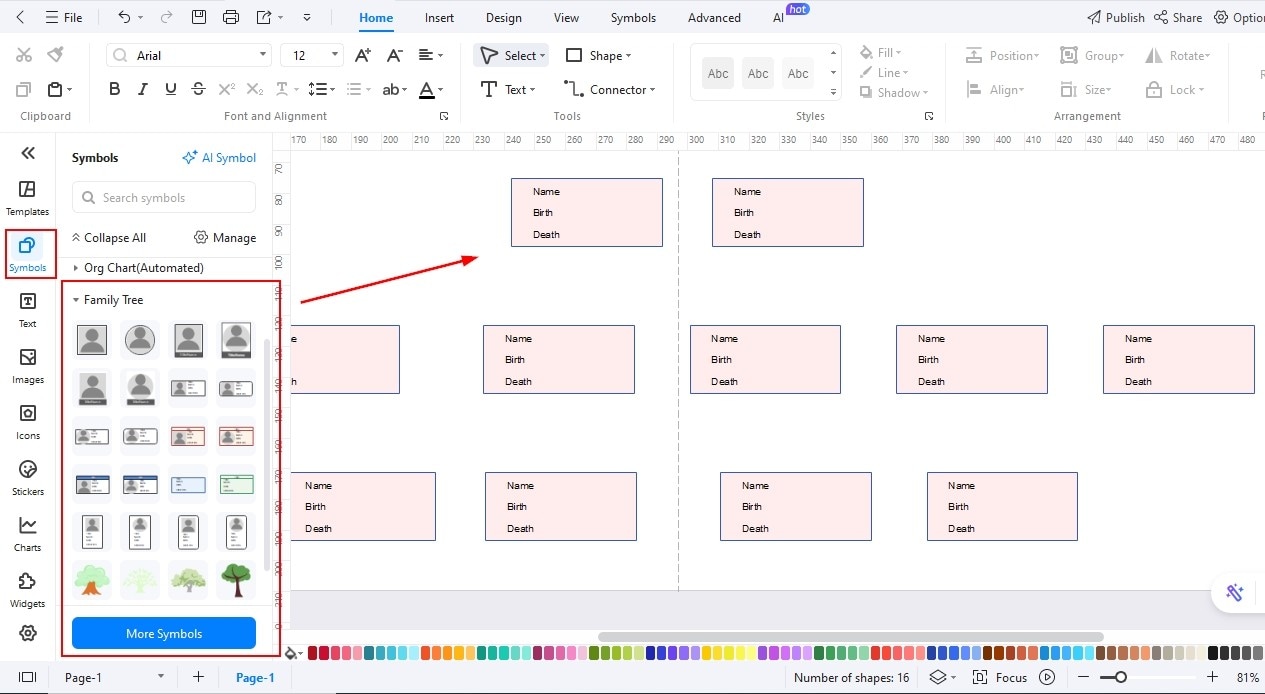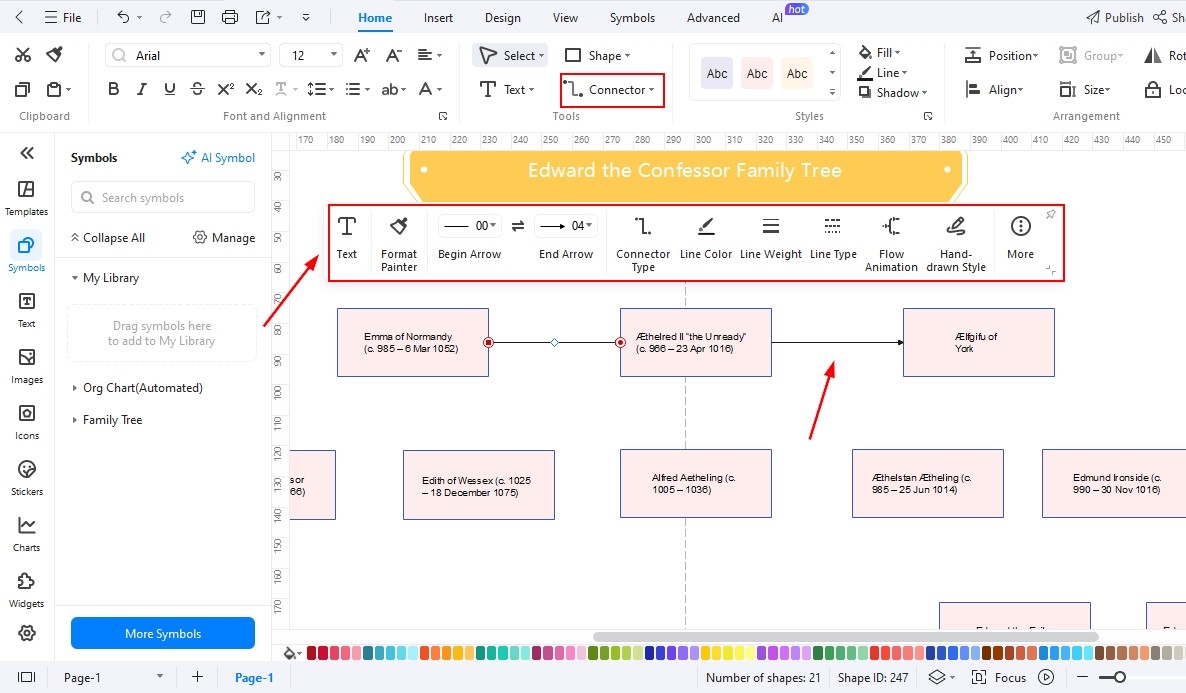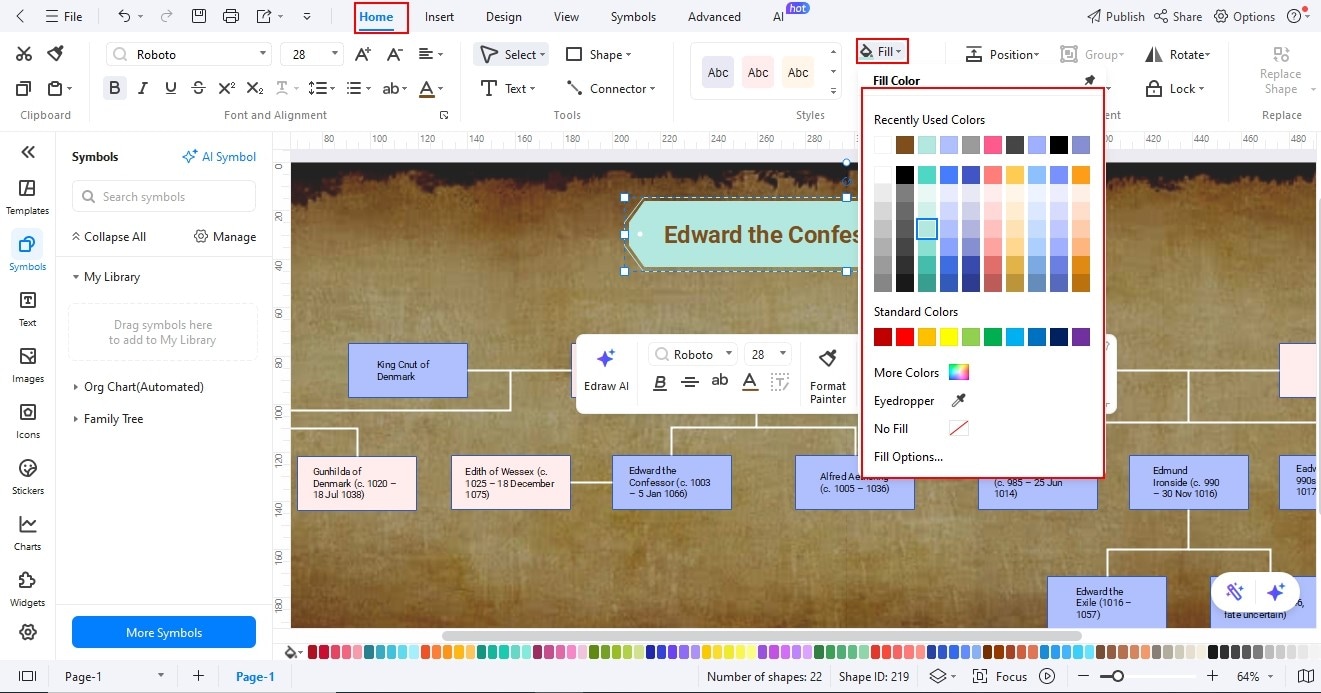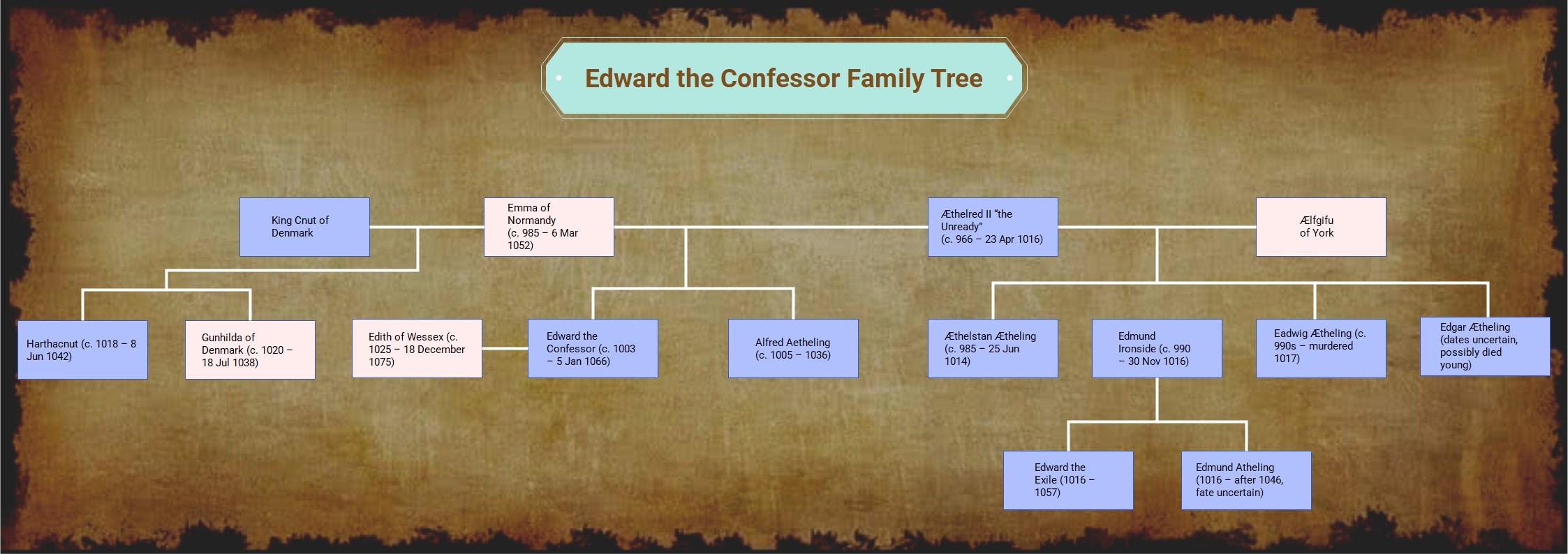Edward the Confessor was one of the most influential kings of England. His wisdom and sense of justice helped maintain peace across the kingdom, even during times of external threats such as Viking invasions. Remembered for his deep piety and fairness, he played a key role in strengthening the Church of England and is best known for commissioning the construction of Westminster Abbey.
In this guide, you will discover:
- Who Edward the Confessor was and insights into his family background
- How to create a family tree to better understand royal connections
- How Edward the Confessor shaped prosperity in his realm while fostering stronger ties with both the Roman and Norman dynasties
Let’s dive in!
Edward the Confessor Family Tree
Edward the Confessor is one of the last Anglo-Saxon Kings of England. He ruled for almost 24 years, during which he brought about significant changes in England. Edward the Confessor's family tree outlines all his family members and their relationships with one another. Let's take a look at his family tree.
Parents of Edward the Confessor
Æthelred the Unready (King of England) and Emma of Normandy were his parents. He had deep roots with the Normans due to his mother, Emma of Normandy.
Æthelred the Unready, his father, ruled England for a longer period. Repeated Viking invasions marked his tenure, but he attempted to bring stability to the region. However, the taxes and raiders weakened his kingdom despite all his efforts.
Emma, his mother, was the daughter of Richard I, Duke of Normandy. It helped ally with England and Normandy. After the death of his husband, he married again to King Cnut, the ruler of Denmark and Norway. This made her the queen twice.
She has played a significant political role in her life and helped make crucial decisions that contributed to the formation of the greatest English empire.
Siblings of Edward
There are 5-6 siblings of Edward. The number is still ambiguous, but a few of them have played a crucial role.
Alfred Ætheling
Alferd was the younger brother of Edward. He was blinded and murdered on the orders of Harold Harefoot when he tried to reclaim the throne of England. He died at a young age.
Harthacnut (c. 1018–1042)
Harthcnut was the half-brother of Edward the Confessor. He was the king of Denmark and later ruled the English Empire as well. He had no children, and after his rule, Edward was the dominant man to claim the throne.
Gunhilda of Denmark
She was the stepsister of Edward and married to Henry III, the Roman Emperor. Her marriage to Henry linked England to the German Empire and brought good relationships between these two regions.
Married Life of Edward the Confessor
Edith of Wessex was his wife, and this marriage was arranged on a political basis to strengthen their relationship to the Powerful Godwin family.
Edith was one of the highly educated ladies in the region and played a crucial role in restoring the rule of law during Edward's reign. She was known for her patronage of the arts, her expertise in embroidery, and her administrative roles.
She learned many languages and was fluent in them, which helped her build strong relationships in various regions.
The works of Edward the Confessor
- The restoration of the Royal Anglo-Saxon line after the reigns of Danish Kings was one of his big achievements.
- One of Edward's greatest legacies was the rebuilding of Westminster Abbey. He built in the Romanesque style, and it also served as his final resting place.
- He was one of the rulers who focused on strengthening the Church, influenced by his mother's religious teachings. He built many churches in England and promoted religious activities during his rule.
- Despite numerous tensions and battles, he sought to bring peace and stability to the region through his negotiations with both adversaries and allies. He tried to maintain the balance when the Normans and Godwin’s were powerful, bringing them together to promote peace and stability.
- He promoted law and justice and was known for his merciful nature, attributed to his sanity and religious activities. He was remembered as a saint by later generations due to his mercy and adherence to the rule of law in the region.
- He was a good political leader, but his succession was a concern as he had no children. But he paved the way for William of Normandy to rule England after his death. So, William claimed the throne based on Edward's suggestions and helped England become a greater land.
How to Create a Family Tree
Writing about family members on paper can often be confusing, especially when trying to understand their connections. A family tree makes this process much easier by visually mapping out relationships in a clear and organized way.
It not only provides a better understanding of family links but also makes the information more engaging and visually appealing.
So, how can you create a family tree? The simplest way is by using a professional tool like EdrawMax, which offers powerful customization features to help you design with clarity and precision. Below are some of the key features of EdrawMax.
Key Features
- Customization tools: EdrawMax allows you to create your own symbol libraries, adjust shapes, connectors, and themes, and save personalized defaults for future diagrams.
- Diagram variety: It supports over 280 types, including flowcharts, mind maps, organizational charts, UML diagrams, network diagrams, P&IDs, and floor plans.
- Template library: EdrawMax offers thousands of ready-made templates to expedite the diagramming process. You can use these templates to make your own design.
- Symbol Library: EdrawMax features over 26,000 vector symbols for various categories, including business, engineering, IT, family trees, charts, and more.
- User interface: The user interface is quite easy to understand, making it particularly suitable for beginners. It offers a simple Drag-and-drop design, smart alignment, auto-connectors, and an intuitive workspace.
- File compatibility: EdrawMax Imports and exports multiple formats, such as Visio, Word, PowerPoint, Excel, PDF, SVG, PNG, and JPG.
Step-by-step guide to create a Family Tree
Step1 Open EdrawMax and Get Started
- Open EdrawMax and search Family Tree in the search bar.
- Or click New to open the empty canvas.

Step2 Add Image Containers on the Canvas
- Go to the symbol’s library and search for 'family tree'; it will bring up all the components needed to create a family tree.
- Click a container or directly drag them one by one to the canvas.

Step3 Add Text/Names for Each Family Member
- Add text for each family member.
- You can add names and dates of birth for each member.

Step4 Add Relationships
- Start adding the relationships among the family members using the connector tool.

Step5 Use Different Colors
- Click the element you want to change the color of and use the fill tool to add colors.
- You can also change the colors for each element individually.

Step6 Export your Family Tree
After making all the edits, it's now time to export your family tree. You can also keep the source file to make any future changes, if needed.
- Click the export button on the top left side of the screen.
- Or click the file and find the export options.
- Set all the parameters, including format, quality, and zoom percentage.
- Click "Export," and your file will be saved to your computer.

Final Thoughts
Edward the Confessor was regarded as one of the most noble and saintly rulers of England. Despite enduring many hardships, he remained steadfast, bringing peace and stability to the kingdom. The loss of his brother at a young age was a great personal tragedy, yet Edward’s composure and wisdom allowed him to guide the land with balance and dignity.
His family tree highlights the key members who played important roles in shaping a broader empire. Studying such family trees is not only a means to understand history but also a way to honor the legacy of great leaders.





